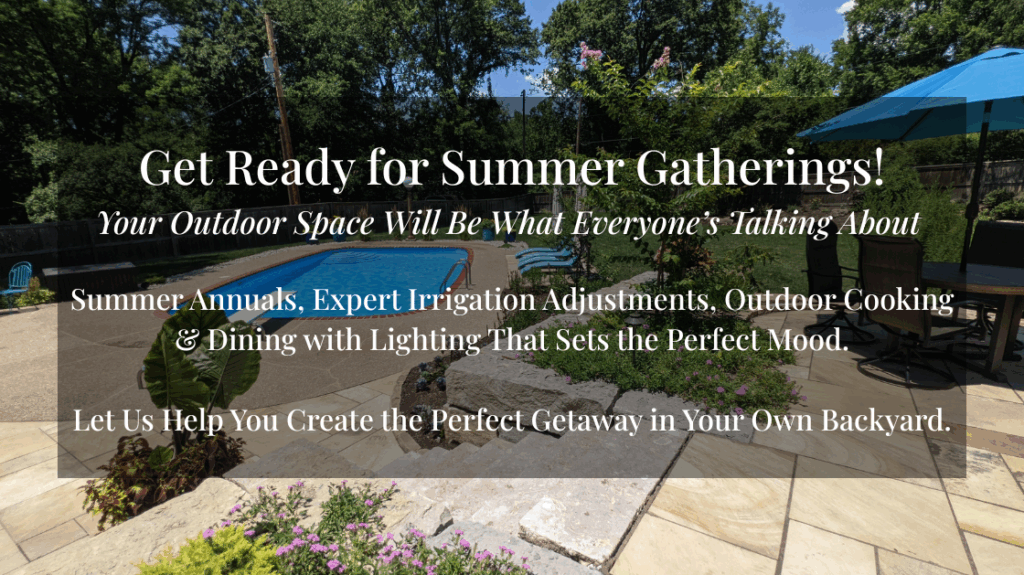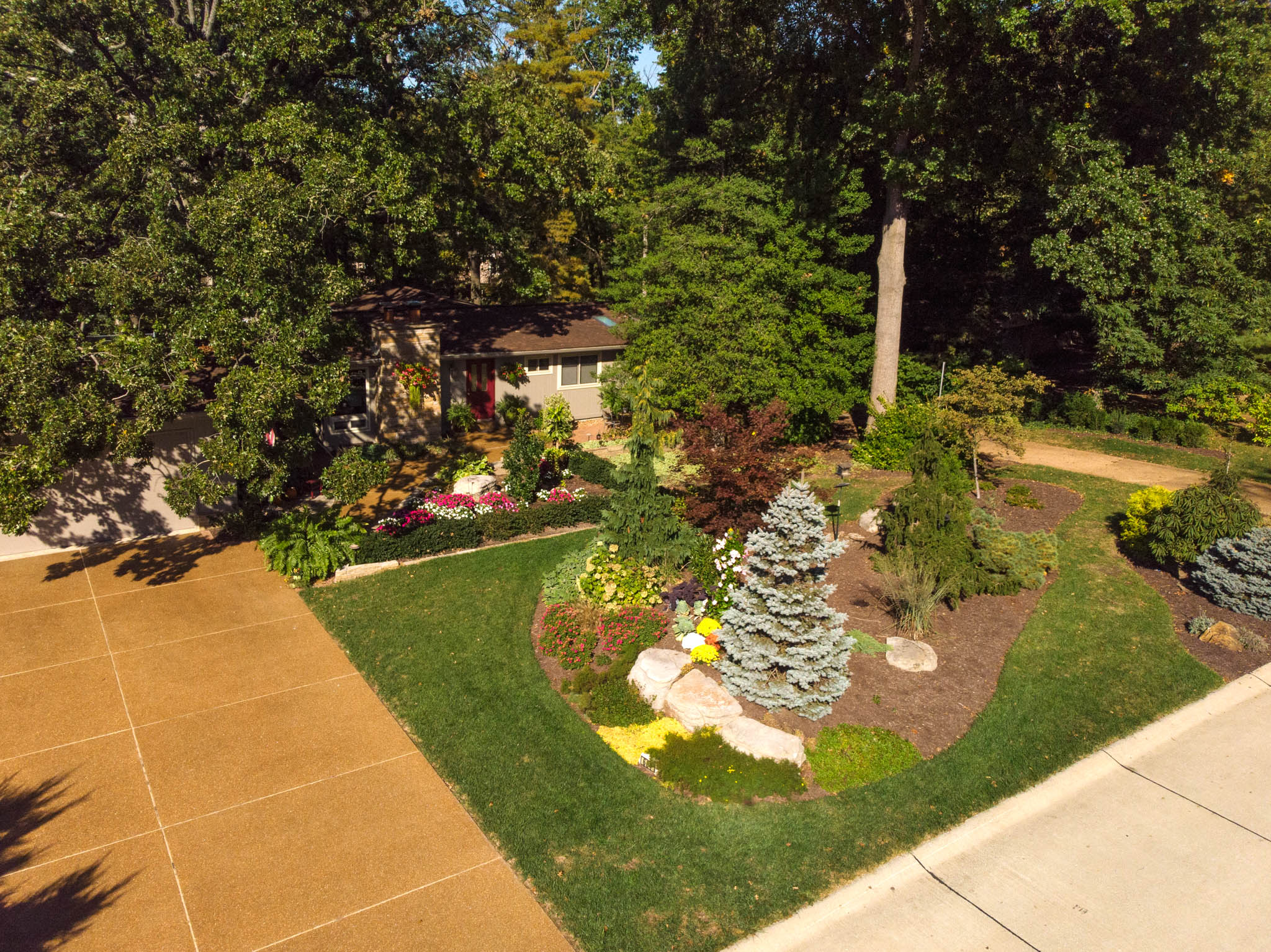Exploring Various Kinds Of Landscape Design to Enhance Your Outdoor Environment
Landscaping plays a vital duty in specifying exterior areas. Numerous designs, from conventional yards to contemporary minimalist designs, provide distinctive advantages for improving looks and feature. Including components like xeriscaping and native plants can add to environmental equilibrium. Comprehending the interplay of hardscape and softscape is necessary for developing inviting settings. The selections readily available can be frustrating, prompting one to reflect on which design ideal straightens with their vision for an outside haven.
Typical Garden Landscape Design

While many contemporary yards welcome minimalism and indigenous plantings, traditional garden landscape design stays a valued technique that emphasizes proportion, framework, and ornamental features. This design commonly integrates formal geometric formats, where hedges, pathways, and flowerbeds are prepared with precision. Central focal points, such as fountains or sculptures, draw the eye and supply a feeling of harmony.Traditional landscape design frequently includes a range of plant types, showcasing seasonal flowers and evergreen elements. Traditional bushes, perennials, and annuals create vivid colors and textures throughout the year. Additionally, arcs, trellises, and pergolas add upright interest and serve as support for climbing up plants, improving the total aesthetic.The usage of natural products, such as stone and wood, more enhances the traditional landscape, adding to an ageless quality. Inevitably, this design invites leisure and enjoyment, making it a cherished selection for those looking for an attractive outdoor atmosphere.
Modern Minimalist Landscaping
Modern minimal landscaping highlights simplicity and performance, characterized by open rooms and tidy lines. Secret qualities consist of a minimal plant palette and thoughtful hardscape layout that focuses on usability and visual appeal. Effective plant choice strategies further improve the minimal technique, developing peaceful outside settings that encourage relaxation and contemplation.
Trick Features of Minimalism
A growing pattern in landscaping is the accept of minimalism, defined by simpleness and capability. Minimal landscape design concentrates on tidy lines, open areas, and a minimal color scheme, advertising a feeling of tranquility. Elements are very carefully curated to prevent mess, permitting each part to stand out. Using natural materials, such as stone and wood, enhances the organic feel while maintaining a visual equilibrium. In addition, minimalist designs frequently integrate geometric shapes, which can develop aesthetic passion without frustrating the senses. Water functions may be included, offering as prime focus that boost peacefulness. Overall, minimalism in landscape design emphasizes the appeal of restriction, permitting nature's intrinsic high qualities to beam through in an unified outside setting.
Plant Option Methods
Reliable plant selection is vital for attaining the preferred visual in contemporary minimalist landscaping. The emphasis ought to get on simpleness, using a minimal scheme of plants that complement each various other and the surrounding atmosphere. Native plants are frequently ideal, as they call for much less maintenance and water, promoting sustainability. Choosing types with differing textures and heights can add visual interest without frustrating the room. Grouping plants in clusters as opposed to scattering them boosts communication and strengthens the minimalist motif. Evergreen ranges can give year-round framework, while seasonal blooms introduce refined shade modifications. Ultimately, the objective is to develop a calm outside area that personifies peace and consistency with thoughtful plant choices.
Hardscape Style Concepts
Vital elements in hardscape layout significantly add to the overall aesthetics and performance of minimalist landscape design. This style strategy highlights tidy lines and downplayed materials, creating a minimalist aesthetic experience. Trick elements include pathways, patios, and keeping wall surfaces, which not just define rooms yet additionally enhance access and usability. Making use of materials such as concrete, rock, and wood is common, reflecting an all-natural yet contemporary aesthetic. Including geometric shapes and balanced layouts better reinforces the minimal viewpoint, enabling for an unified mix with bordering greenery. In addition, proper drainage and erosion control are necessary factors to consider, ensuring durability and sustainability. Inevitably, reliable hardscape style acts as a foundation that enhances softscape elements while preserving equilibrium and simpleness in exterior environments.
Cottage-Style Landscape design
Cottage-style landscape design uses a wonderful technique to creating welcoming exterior rooms. By incorporating lovely plant mixes, this design promotes a sense of warmth and whimsy. The emphasis on comfortable, well-defined locations encourages relaxation and satisfaction of nature.
Charming Plant Combinations
Lots of property owners look for to produce an attractive outside space, accomplishing the beauty of cottage-style landscape design frequently pivots on thoughtful plant combinations. Lively blooms, lush vegetation, and fragrant natural herbs can be artfully paired to stimulate a sense of whimsy and nostalgia. For example, combining lavender, daisies, and foxgloves creates a vivid tapestry that brings in pollinators while supplying a fascinating fragrance. Incorporating decorative yards like miscanthus can add texture and activity, matching the softer blossoms. In addition, blending perennial and yearly plants warranties continual shade throughout the periods. Making use of mountain climbers, such as clematis or honeysuckle, can boost upright passion. In general, these mixes not only improve the landscape but additionally promote a inviting and charming ambience.

Relaxing Outside Spaces
Developing comfy outside spaces calls for a careful mix of comfort and beauty, matching the dynamic plant combinations discovered in cottage-style landscape design - Retaining Wall Installation. These locations usually include welcoming seating setups, such as weather-beaten wooden benches or cushioned chairs bordered by lavish greenery. Soft illumination, like fairy lights or lights, includes heat, transforming the room into a serene resort. Including aspects such as trellises adorned with climbing roses or fragrant natural herbs improves sensory experiences. Furthermore, paths made from rustic rocks invite exploration and link with nature. Decorative touches like birdbaths or whimsical yard art add to a feeling of fancifulness. Eventually, the goal is to develop an enchanting environment that motivates relaxation and satisfaction of the appeal bordering these cozy outdoor places
Xeriscaping for Water Conservation
How can neighborhoods balance visual landscape design with journalism need for water conservation? Xeriscaping becomes a practical solution, advertising lasting methods that reduce water usage while improving outdoor charm. This landscape design technique focuses on making use of drought-resistant plants belonging to the region, which call for considerably much less water than typical yards. By integrating mulch and reliable irrigation systems, xeriscaping minimizes dissipation and drainage, more saving valuable water resources.Communities can develop aesthetically appealing landscapes via mindful planning, selecting a varied array of structures and shades hop over to these guys that thrive in dry problems. Additionally, xeriscaping urges using ornamental rocks and decorative gravel, offering appealing and useful alternatives to lawn lawns. As neighborhoods welcome this environment-friendly method, they not just reduce their water consumption yet likewise promote biodiversity and resilience in their regional ecological communities. Ultimately, xeriscaping works as a demo of the harmony in between aesthetic appeal and ecological responsibility.
Hardscape Layout Components
Hardscape design elements play an essential function in boosting outdoor rooms by providing framework and capability. These non-plant features, such as outdoor patios, pathways, decks, and wall surfaces, create aesthetic passion while offering useful purposes. Using products like concrete, rock, and brick, hardscaping adds to the total aesthetic appeal and sturdiness of a landscape.Incorporating hardscape elements can specify areas within a backyard, assisting motion and encouraging social communication. For example, a well-placed path can connect various areas of the garden, while keeping wall surfaces can take care of elevation modifications and avoid erosion.Furthermore, hardscape design can boost accessibility and safety, providing secure surface areas for walking or lounging. Efficient assimilation of hardscape elements matches soft landscaping, guaranteeing a well balanced outside setting. Eventually, thoughtful hardscape style boosts not just the beauty of outside rooms but also their use, making them much more welcoming and practical for visitors and property owners alike.
Exterior Living Areas
While outside living rooms use a smooth blend of comfort and nature, they offer as vital expansions of a home, improving way of life and recreation. These locations can consist of outdoor patios, decks, or outside kitchens, designed to foster relaxation and amusement. Grill Islands. By integrating functional furniture and fashionable decoration, house owners develop welcoming environments for gatherings or quiet evenings.The integration of color structures, such as pergolas or awnings, protects against the aspects while keeping an open feeling. Fire pits and exterior heating units prolong functionality right into cooler months, offering warmth and ambiance. Additionally, incorporating lighting attributes improves the space's use after sundown, producing a magical night atmosphere.Landscaping elements, such as pathways and borders, even more specify these areas, leading movement and including visual allure. Ultimately, outside living areas change backyards into versatile hideaways, advertising a way of life that accepts both nature and convenience
Native Plant Landscaping
Native plant landscape design emphasizes making use of indigenous vegetation to create sustainable and unified outside environments. This technique not only enhances biodiversity however also preserves water and reduces the demand for chemical plant foods and pesticides. By choosing plants that are indigenous to a certain region, house owners can ensure that their landscapes are well-adapted to neighborhood dirt and environment problems, leading to reduced upkeep requirements.Additionally, native plants give necessary habitats for regional wild animals, including birds, bees, and butterflies, promoting environmental health and wellness. Landscape makes that incorporate these plants typically feature naturalistic layouts that imitate local communities, promoting a local color and connection to the environment.Furthermore, indigenous plant landscaping can contribute to dirt stability and erosion control, making it an ecologically responsible option. Overall, this practice not just beautifies exterior rooms but also supports the regional environment, developing a lasting balance between human activity and nature.

Frequently Asked Inquiries
How Can I Choose the Right Landscaping Style for My Home?
Picking the appropriate landscaping design for a home involves assessing the building's design, climate, and individual choices. Landscape Lighting Installer. Looking into numerous styles and consulting experts can offer assistance to produce an unified exterior area customized to private requirements
What Is the Average Cost of Professional Landscape Design Services?
The typical expense of professional landscaping solutions generally varies from $1,000 to $5,000, depending upon project dimension, complexity, and location. Property owners must consider obtaining multiple quotes to assure they receive fair rates and top quality solution.
How Commonly Should I Preserve My Landscaped Yard?
The frequency of maintaining a landscaped lawn commonly depends upon the functions and plants present. Usually, regular upkeep every few weeks is encouraged, with seasonal jobs enhancing in frequency throughout peak expanding seasons for excellent health and visual appeals.
Exist Landscaping Alternatives for Small Urban Spaces?

Different landscaping choices exist for tiny urban areas, consisting of upright gardens, container plants, and rooftop yards. Integrating these components can maximize limited areas while supplying greenery, boosting aesthetic appeals, and boosting air high quality in metropolitan settings.
What Plant kingdom Are Ideal for Bring In Neighborhood Wildlife?
The finest plants for drawing in regional wild animals include native flowering varieties, berry-producing hedges, visit site and diverse turfs. These plants offer necessary food and habitat, promoting a growing ecosystem that supports numerous birds, pests, and small animals. Lots of homeowners look for to produce a stunning outside room, attaining the appeal of cottage-style landscape design usually hinges on thoughtful plant combinations. Creating cozy outside rooms calls for a mindful blend of comfort and beauty, complementing the vivid plant combinations located in cottage-style landscape design. Native plant landscaping Click This Link emphasizes the use of native plants to develop harmonious and sustainable outdoor atmospheres. Landscape develops that incorporate these plants commonly include naturalistic layouts that mimic local communities, cultivating a feeling of area and link to the environment.Furthermore, indigenous plant landscaping can add to soil stability and disintegration control, making it an environmentally liable choice. Different landscape design choices exist for little metropolitan spaces, consisting of upright gardens, container plants, and roof yards.